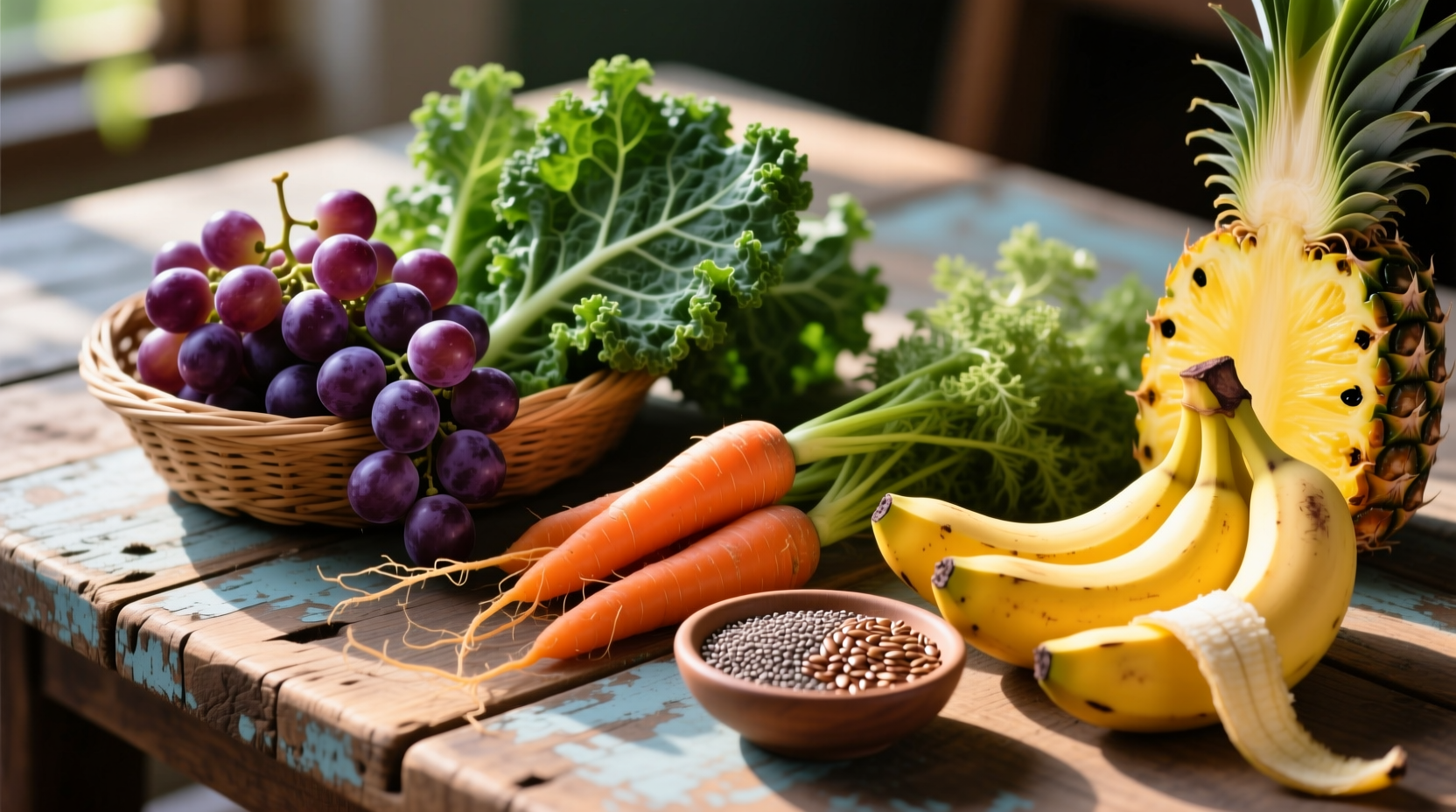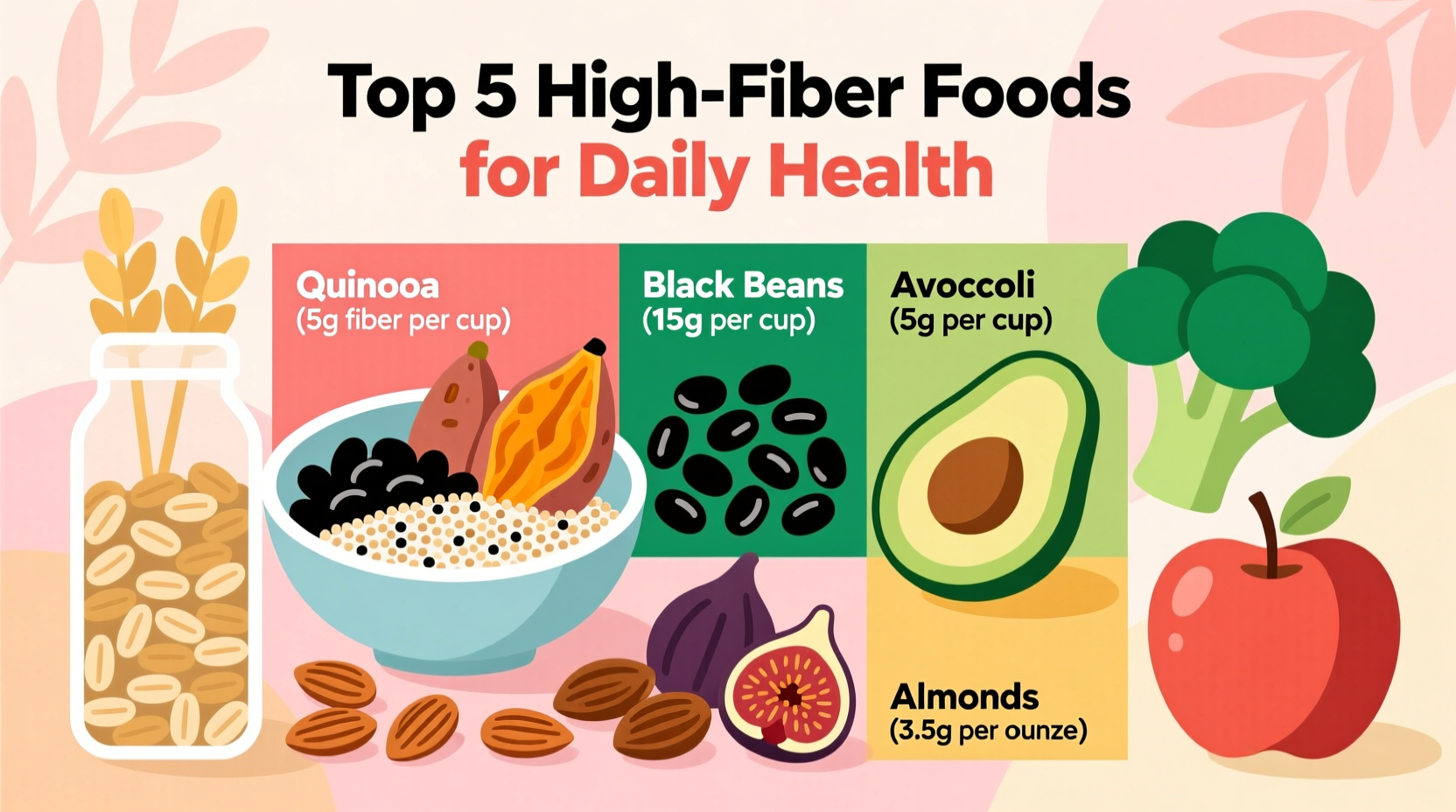Top high-fiber foods include lentils (15.6g per cup), black beans (15g per cup), chia seeds (10g per ounce), raspberries (8g per cup), artichokes (7g per medium), and oats (4g per 1/2 cup). Adults need 25-38g of fiber daily for optimal digestive health, blood sugar control, and heart disease prevention according to the National Institutes of Health.
Discover how to naturally boost your fiber intake with science-backed food choices that support digestive health, weight management, and long-term wellness. This guide delivers practical, evidence-based recommendations you can implement immediately—no complicated calculations or expensive supplements required.
Why Fiber Matters More Than You Think
Fiber isn't just for preventing constipation. Research from the National Heart, Lung, and Blood Institute shows adequate fiber consumption reduces risk of heart disease by 30%, lowers type 2 diabetes risk by 27%, and supports healthy gut bacteria diversity. Yet 95% of Americans fail to meet daily recommendations.
Your Complete High-Fiber Food Guide
Legumes: The Fiber Powerhouses
Beans, lentils, and peas deliver exceptional fiber density. A single cup of cooked lentils provides 63% of your daily fiber needs. Unlike processed fiber supplements, legumes offer complete nutrition packages with protein, iron, and folate.
| Food (1 cup cooked) | Total Fiber | Soluble Fiber | Protein |
|---|---|---|---|
| Lentils | 15.6g | 5.4g | 18g |
| Black Beans | 15g | 5.5g | 15g |
| Chickpeas | 12.5g | 4.5g | 14.5g |
Data source: USDA FoodData Central
Whole Grains: Beyond Basic Oats
While oats deserve their reputation, lesser-known grains like barley and freekeh offer superior fiber profiles. A 2023 NIH study found that hulled barley contains 30% more fiber than rolled oats and maintains stable blood sugar levels for 6+ hours after consumption.
Fruits: Nature's Portable Fiber
Focus on whole fruits rather than juices to maximize fiber intake. Raspberries contain 8g fiber per cup—more than most vegetables. The skin contains valuable insoluble fiber, so skip peeling apples, pears, and plums whenever possible.

Vegetables: The Underrated Champions
Artichokes lead the vegetable category with 7g fiber per medium artichoke. Broccoli stems (often discarded) contain 2.5g fiber per cup—nearly as much as the florets. Roasting enhances fiber availability in cruciferous vegetables by breaking down cellulose structures.
Practical Implementation Strategies
Smart Fiber Integration Timeline
Increasing fiber too quickly causes discomfort. Follow this evidence-based progression from the Mayo Clinic:
- Week 1: Add 5g fiber daily (1/2 cup black beans or 1 medium pear)
- Week 2-3: Increase water intake to 8 glasses daily while adding another 5g fiber
- Week 4: Reach target intake with balanced soluble/insoluble sources
Avoid These Common Fiber Pitfalls
Many 'high-fiber' products contain isolated fibers like inulin that don't provide the same benefits as whole food fibers. A 2019 American Heart Association review found that only fiber from whole foods demonstrated cardiovascular benefits. Additionally, excessive fiber (over 70g daily) can interfere with mineral absorption.
Your Fiber Intake Action Plan
Start tomorrow with these simple swaps that add 10g of fiber without changing your routine:
- Replace white rice with quinoa (add 3g fiber per cup)
- Add 2 tablespoons chia seeds to morning smoothie (add 10g fiber)
- Snack on 1/4 cup almonds instead of crackers (add 4g fiber)
Remember to increase water intake proportionally—each additional 10g of fiber requires at least 8 extra ounces of water for proper digestion.
Frequently Asked Questions
How do I know if I'm getting enough fiber?
Track your intake using free apps like Cronometer for 3 days. If you consistently fall below 25g (women) or 38g (men), gradually incorporate more whole plant foods. Noticeable improvements in regularity and satiety typically occur within 2 weeks of consistent adequate intake.
Can I get too much fiber?
Yes—excessive fiber (over 70g daily) may cause bloating, gas, and interfere with mineral absorption. The NIH recommends capping intake at 50g daily even for athletes. If increasing fiber causes discomfort, slow your progression and ensure adequate hydration.
Are fiber supplements as good as whole foods?
No—whole foods provide additional nutrients, phytochemicals, and the ideal soluble-to-insoluble fiber ratio. Supplements like psyllium can help bridge gaps but shouldn't replace diverse plant foods. Research shows only whole food fiber consistently delivers cardiovascular and metabolic benefits.











 浙公网安备
33010002000092号
浙公网安备
33010002000092号 浙B2-20120091-4
浙B2-20120091-4